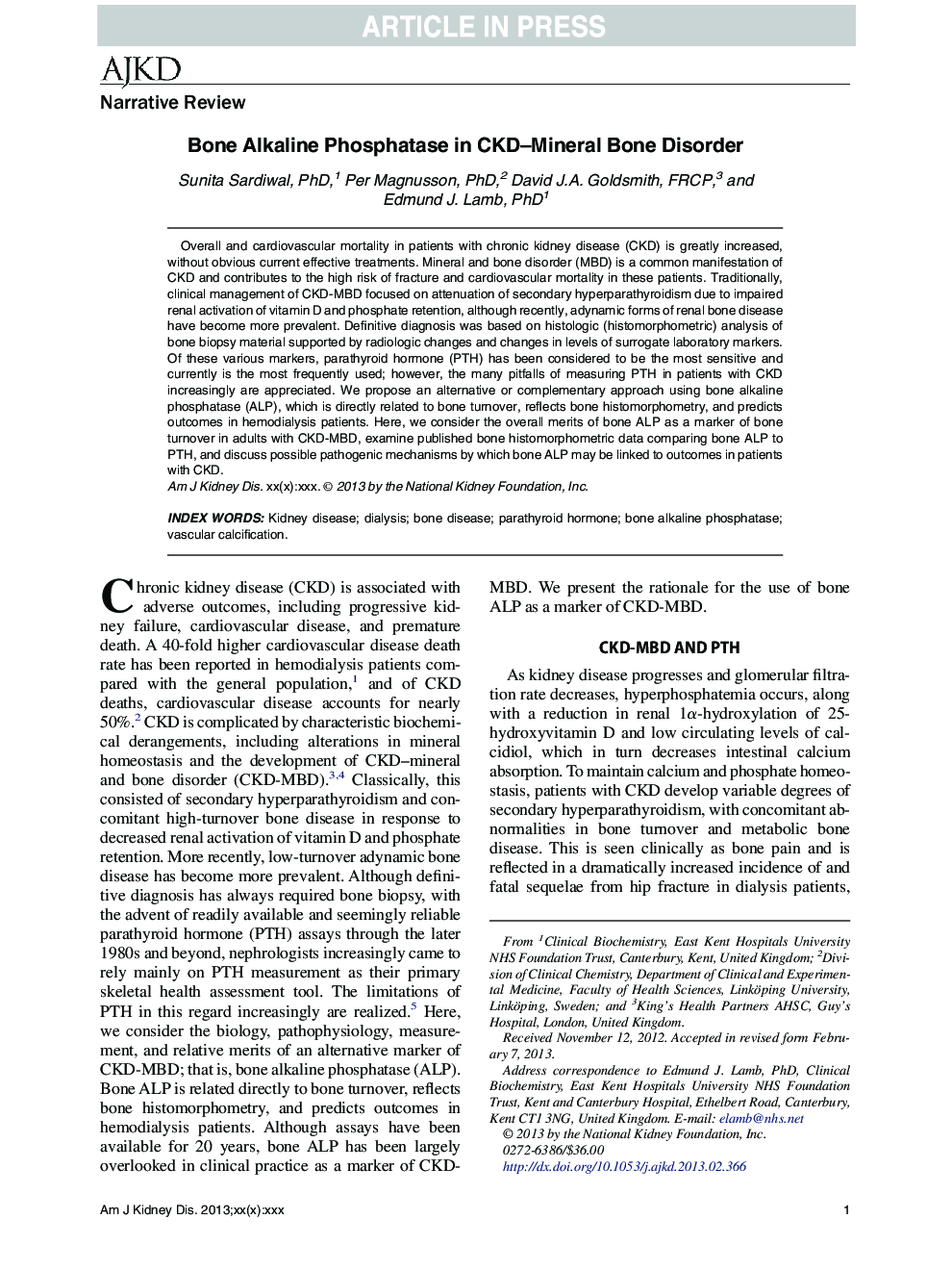| Article ID | Journal | Published Year | Pages | File Type |
|---|---|---|---|---|
| 3848289 | American Journal of Kidney Diseases | 2013 | 13 Pages |
Abstract
Overall and cardiovascular mortality in patients with chronic kidney disease (CKD) is greatly increased, without obvious current effective treatments. Mineral and bone disorder (MBD) is a common manifestation of CKD and contributes to the high risk of fracture and cardiovascular mortality in these patients. Traditionally, clinical management of CKD-MBD focused on attenuation of secondary hyperparathyroidism due to impaired renal activation of vitamin D and phosphate retention, although recently, adynamic forms of renal bone disease have become more prevalent. Definitive diagnosis was based on histologic (histomorphometric) analysis of bone biopsy material supported by radiologic changes and changes in levels of surrogate laboratory markers. Of these various markers, parathyroid hormone (PTH) has been considered to be the most sensitive and currently is the most frequently used; however, the many pitfalls of measuring PTH in patients with CKD increasingly are appreciated. We propose an alternative or complementary approach using bone alkaline phosphatase (ALP), which is directly related to bone turnover, reflects bone histomorphometry, and predicts outcomes in hemodialysis patients. Here, we consider the overall merits of bone ALP as a marker of bone turnover in adults with CKD-MBD, examine published bone histomorphometric data comparing bone ALP to PTH, and discuss possible pathogenic mechanisms by which bone ALP may be linked to outcomes in patients with CKD.
Keywords
Related Topics
Health Sciences
Medicine and Dentistry
Nephrology
Authors
Sunita PhD, Per PhD, David J.A. FRCP, Edmund J. PhD,
